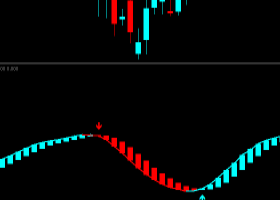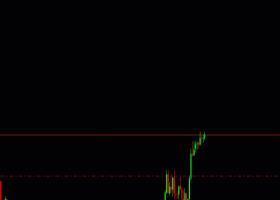
USD/JPY: End Of A Perfect Storm? - Forecast & Strategy - Danske
13 April 2016, 12:41
0
47
Perfect storm for USD/JPY is a big challenge for the BoJ:
Pressure on the Bank of Japan (BoJ) to ease monetary policy is mounting as USD/JPY has declined more than 11% since the beginning of the year, while the nominal effective JPY exchange rate has increased to 2013 levels. This year is proving to be a very challenging one for the BoJ, as the JPY has been carried forward in recent months by what could be viewed as a perfect storm for the currency. Hence, while fundamentals, such as a growing current account surplus, a positive net international investment position (NIIP) and the JPY, according to our medium- and long-term models (MEVA and PPP), still being undervalued, are providing substantial support to the JPY, other factors such as negative risk sentiment driven by rising global growth concerns and falling US interest rates due to a more dovish stance by the FOMC have supported the strong downtrend in USD/JPY in 2016.
It’s make or break for the BoJ:
Copy signals, Trade and Earn $ on Forex4you - https://www.share4you.com/en/?affid=0fd9105
We see many reasons why the BoJ must act now. (1) The recent strengthening of the JPY is putting further downward pressure on inflation and inflation expectations and eroding confidence in the bank. (2) Cyclically, the economy is slowing and Japan most likely fell into a technical recession in Q1. Moreover, both the PMI and Tankan surveys have deteriorated recently, pointing to a further slowdown in coming quarters. (3)
The spring’s wage negotiations (shunto) point to slower wage growth in FY 2016 than in 2015. However, at present, the most important argument for a policy response, in our view, is that the BoJ needs to restore confidence and, in this sense, we are moving closer to ‘a make or break scenario’ for the BoJ. We expect the BoJ to cut its policy rate by 20bp to -0.3% in connection with its monetary policy meeting ending 28 April. Moreover, we think it is likely that the BoJ might focus on qualitative measures, such as scaling up ETF and J-REIT (real estate investment trusts) from the current JPY3trn and JPY90bn, respectively), in order to optimise its asset purchases. Pricing in the Japanese money market implies only a low probability of a rate cut in April, while the overnight interest rate is priced to fall to -0.2% in November 2016.
For latest trades & forecasts from major banks, sign-up to eFXplus
FX outlook:
Short-term factors supporting a stabilisation In the short term, we think the strong downtrend in USD/JPY is likely to persist – at least until disrupted by policy action. If USD/JPY continues to fall further in coming weeks, the risk is that the BoJ might act before its monetary policy meeting on 28 April.
The big question is whether a policy response will be enough to stop the downtrend. In our view, a stretched long JPY positioning, combined with USD/JPY being oversold both technically and according to our short-term financial model, implies that a BoJ rate cut combined with a very dovish rhetoric signalling further easing down the road could have an effect on USD/JPY this time around. Moreover, the relatively dovish pricing of the Fed, which currently implies around 15% probability of a June hike (35% in September) and only 50% probability of a hike by the end of 2016, indicates that headwinds stemming from relative rates are likely to ease. We expect the FOMC to hike in September and to deliver three additional rate hikes in 2017.
This said, the fundamental factors are set to remain intact maintaining downward pressure on USD/JPY in the short to medium term.Hence, we expect that BoJ easing to help to stabilise USD/JPY above 110 for now but we do not expect to see a significant reversal of the trend in USD/JPY. We forecast USD/JPY at 112 in 1M and 3M (3M revised down from 115) on a BoJ rate cut in April.
6-12M: higher on cyclical and relative monetary policy divergence On a 6-12M horizon, fiscal headwinds are still looming in terms of a possible VAT increase in April 2017. At the same time, we expect the Fed to resume its hiking cycle in September. Hence, with the support from cyclical divergence and relative monetary policy, we believe the tide for the JPY is likely to turn again allowing it to remain fundamentally undervalued for a prolonged period. Thus, we continue to see a case for a gradually higher USD/JPY in the medium term, forecasting the cross at 118 in 6-12M.
FX strategy:
Leverage funds While our strategic long-term bias remains to buy USD/JPY, we prefer to stay sidelined in the near term as, in our view, USD/JPY is likely to trickle further down going into the BoJ meeting on 28 April. However, the risk of an early policy response exists and, in our view, is highly likely if USD/JPY depreciates significantly in the coming weeks. Thus, we recommend investors take advantage of the recent decline in USD/JPY, which, according to our models, seems overdone and gradually increase short JPY positions ahead of the BoJ meeting. When adjusted for implied at-the-money volatility, 3M USD/JPY risk reversal has declined substantially over the past few weeks and trades at close to the lowest levels seen in many years. We think a 3M bullish risk reversal is an attractive strategy to position for a rebound in USD/JPY.
Real money funds Fundamentally, we remain bearish on the JPY on a six- to 12-month horizon versus both USD and EUR and we recommend EUR- and DKK-based real money funds gradually increase the hedge ratio on JPY exposure ahead of the BoJ meeting. Given the very stretched pricing in the FX option market, where JPY calls now command larger premiums than put options, we think EUR/JPY risk reversals offer an attractive risk/reward when hedging JPY assets/income. We favour 3-6M risk reversals, which appear to be the cheapest tenors according to our skew monitor.


